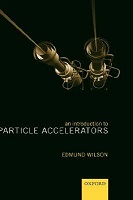An Introduction to Particle Accelerators
Author(s)
Wilson, Edmund
Collection
SCOAP3 for BooksLanguage
EnglishAbstract
Many scientists and engineers spend their lives designing, constructing, and running accelerators, yet few universities include a study of them in their curricula. This book is a straightforward introduction used by undergraduates and postgraduate students as well as by professional staff attending the summer schools run by the big accelerator laboratories. Research physicists should read it for important background. It covers the essentials of the subject for accelerator physicists and engineers, and is at the level of the introductory courses provided by the CERN and US Accelerator schools. Its style is to give enough information to understand the subject without an excess of mathematics or theory. The text includes exercises and answers to focus the attention of the reader on the calculations necessary to design a new machine. After a chapter on the history of the accelerators, four chapters cover the dynamics of particle beams as they are guided and focused by the magnets of a synchrotron or storage ring and as they are accelerated by rf cavities. Another two chapters cover linear and non-linear effects from imperfect fields. There are chapters on synchrotron radiation, colliders, instabilities, and on future acceleration techniques. A chapter describes the applications of the ten thousand or more accelerators in the world ranging from the linear accelerators used for cancer therapy, through those used in industry and in other fields of research, to the giant ‘atom smashers’ at international particle physics laboratories. A final chapter is to stimulate new ideas for future acceleration techniques.


 Download
Download Web Shop
Web Shop